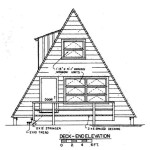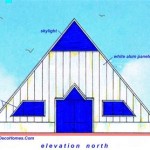Create A House Plan Free: Design Your Dream Home Today (2024)
Designing a home is a significant undertaking, typically involving substantial financial investment. Transforming visions of ideal living spaces into tangible blueprints often necessitates the services of architects or drafting professionals. However, in 2024, advancements in technology offer accessible alternatives, enabling individuals to create house plans for free. This article explores the resources available for designing a house plan free of charge, empowering future homeowners to conceptualize and visualize their dream homes before engaging professional services.
The ability to create a house plan without incurring initial costs provides several advantages. It allows homeowners to explore different design options, experiment with layouts, and refine their vision before committing to a final design. This iterative process can save time and money in the long run, preventing costly revisions during the construction phase. Furthermore, a preliminary house plan can facilitate more effective communication with architects, contractors, and other professionals involved in the building process.
While completely free solutions might have limitations in features or complexity, they serve as excellent starting points for visualizing spatial arrangements and understanding basic architectural principles. These tools can range from simple online floor plan creators to more sophisticated software offering 3D modeling capabilities. The availability of such resources democratizes the design process, allowing individuals with varying levels of technical expertise to participate in shaping their future homes.
Leveraging Free Online Floor Plan Software
Numerous online platforms offer free floor plan creation tools. These platforms typically provide drag-and-drop interfaces, allowing users to easily add walls, doors, windows, and furniture. While the functionality may be limited compared to professional architectural software, these tools are often sufficient for creating basic floor plans and experimenting with different layouts. Some platforms also offer pre-designed templates that can be customized to suit specific needs and preferences.
When selecting a free online floor plan software, consider factors such as ease of use, available features, and compatibility with different devices. Some software is browser-based, requiring no installation, while others may require downloading a desktop application. It is also important to review the terms of service and privacy policies to ensure that personal data and design information are protected.
Most free online floor plan tools operate on a freemium model, offering basic features for free while charging for access to more advanced functionalities. These advanced features may include 3D modeling, rendering, collaboration tools, and the ability to export designs in various file formats. Before investing in a paid subscription, it is advisable to thoroughly evaluate the free version to determine if it meets the specific design requirements.
Examples of such software often include features for adding structural elements like walls, windows, and doors with customizable dimensions. Users can specify room sizes and arrangements, experiment with furniture placement, and visualize the overall flow of the space. Some platforms also incorporate basic landscaping tools, enabling users to design outdoor areas and visualize the relationship between the house and its surroundings.
Moreover, some of these platforms offer pre-designed templates for various house styles and sizes, providing a starting point for users who may not have a clear idea of their desired layout. These templates can be customized to reflect individual preferences, saving time and effort compared to starting from scratch. The ability to save and share designs allows users to collaborate with family members, friends, or contractors, soliciting feedback and making informed decisions.
Utilizing Open-Source Architectural Design Software
Open-source architectural design software provides a more powerful and flexible alternative to online floor plan tools. These software packages are typically developed and maintained by communities of volunteers, offering a wide range of features without any licensing fees. While open-source software may have a steeper learning curve compared to user-friendly online tools, it provides greater control over the design process and allows for more complex and detailed house plans.
Open-source architectural design software often supports 2D drafting, 3D modeling, and building information modeling (BIM). BIM is a process that involves creating a digital representation of a building, incorporating information about its physical and functional characteristics. This allows for better coordination and communication among different stakeholders involved in the construction process.
One of the key advantages of open-source architectural design software is its customizability. Users can often modify the software's code to add new features or tailor it to their specific needs. This requires programming skills, but it allows for a level of flexibility that is not available with commercial software. Furthermore, open-source software typically has a large and active community of users who can provide support and assistance.
However, open-source software may lack the polished user interface and extensive documentation of commercial software. Users may need to rely on online forums, tutorials, and community support to learn how to use the software effectively. It is also important to ensure that the software is compatible with the desired operating system and hardware configuration.
Examples of open-source architectural design software include FreeCAD and LibreCAD. These programs offer a range of tools for creating detailed 2D and 3D house plans. While they may require more technical expertise than online floor plan tools, they provide a powerful and free alternative for designing a dream home.
Exploring Sketching and Manual Drafting Techniques
While digital tools offer convenience and precision, traditional sketching and manual drafting techniques remain valuable for conceptualizing house plans. These methods allow for a more intuitive and artistic approach to design, fostering creativity and experimentation. Sketching is particularly useful for exploring different ideas and visualizing spatial arrangements before committing to a formal design.
Manual drafting involves using traditional tools such as pencils, rulers, and protractors to create detailed drawings of house plans. While this method requires more time and effort than digital drafting, it provides a greater sense of control and precision. Manual drafting can also be a valuable skill for architects and designers, enhancing their understanding of spatial relationships and construction techniques.
For individuals who prefer a hands-on approach, sketching and manual drafting offer a cost-effective and accessible way to create house plans. These methods require minimal investment in materials and equipment, making them ideal for beginners. Furthermore, they allow for a greater level of artistic expression and personalization.
However, sketching and manual drafting may not be suitable for creating complex or detailed house plans. Digital tools offer greater precision and efficiency, allowing for easier modifications and collaborations. It is also important to consider the time and effort required to create manual drawings, especially for larger or more intricate designs.
Even if the intention is to use digital software for the final house plan, starting with sketches can be beneficial. These initial sketches serve as a foundation for the digital design, providing a visual representation of the homeowner's vision and facilitating communication with architects and contractors. Furthermore, the act of sketching can help to clarify design ideas and identify potential challenges before investing significant time and effort into a digital model.
In conclusion, creating a house plan for free in 2024 is achievable through various resources. From user-friendly online floor plan software to powerful open-source architectural design tools and traditional sketching techniques, individuals have options to visualize and design their dream homes. The choice of method depends on individual preferences, technical skills, and the complexity of the desired design. By leveraging these available resources, prospective homeowners can actively participate in the design process, refine their vision, and ultimately create a home that meets their needs and aspirations.

13 Best Free Home Design Tools In 2024

Modern House Design How To Achieve Openness In

13 Best Free Home Design Tools In 2024

3 Bedroom House Plan Stylish Home Designs And Budgets In 2025

Modern House Design How To Achieve Openness In

House Map Customized Designs By Professionals Interactive 3d Imagination Shaper

Dream Homes Unleashed Finding The Right 30 40 House Plan

3 Bedroom House Plan Stylish Home Designs And Budgets In 2025

House Plans Floor Blueprints

Create House Plans All In One Roomsketcher
Related Posts








